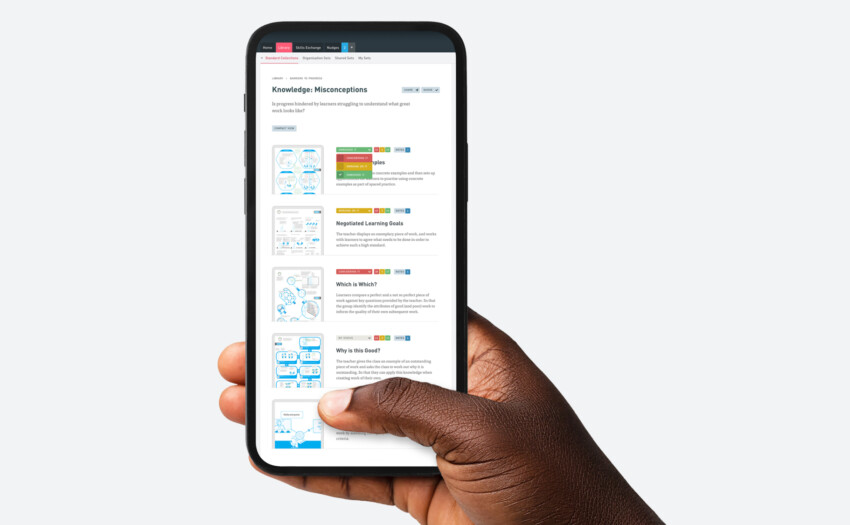TeachingHOW2s: Making It Add Up Lesson by Lesson
By Ian Skelcher, Maths Teacher and Teaching and Learning Coach, South and City College Birmingham

As a Maths teacher, I’m always looking for ways to explain things more clearly, keep students engaged, and make learning stick, especially when it comes to those who arrive in class already convinced they can’t do Maths. That’s where the HOW2 Platform has made a real difference to my practice.
When our college first introduced HOW2s, I was intrigued. I’d seen all kinds of CPD over the years — some useful, some less so — but this felt different. It struck me as practical, visual, and rooted in evidence. The platform doesn’t just tell you what good teaching looks like — it shows you how to do it, step-by-step.
Visual Guides That Make Teaching Strategies Actionable
For me, the standout feature has been the visual, dual-coded presentation screens and infographics. Each teaching technique is broken down into simple, intuitive diagrams with concise, step-by-step explanations. As a busy teacher, it’s exactly what I need: quick to access, easy to follow, and ready to apply.
Take modelling techniques, for example. I use them frequently — most recently to support a lesson on algebraic manipulation. Seeing the structure laid out visually helped me plan the pacing, focus my modelling more sharply, and build in space for students to reflect and self-assess.
The visual format also makes it much easier to try something new with confidence. It’s not just about knowing what the strategy is — it’s about seeing how it plays out in practice.

Contextualised Support Through the HOW2+AI Assistant
What’s made it even more powerful lately is the introduction of the HOW2+AI assistant. This has taken things to the next level. Let’s say I’m preparing a lesson on indices, and I want to incorporate “Retrieval Practice.” I can ask the AI how best to apply that technique to this particular topic, in a vocational setting, or with mixed-ability learners, and it gives tailored suggestions.
It’s like having a pedagogical coach in my pocket. It helps me move from the generic to the specific — and that’s made a real difference in how relevant and targeted my lesson strategies have become.

Features That Fit Around My Teaching Life
Another thing I value is how the platform fits around the reality of teaching. I can:
Browse techniques by category, focus, or teaching goal.
Pin and save favourites so I can build up a personalised toolkit.
See how other teachers are using the same technique through the HOW2 Notes and Sharing features, which are great for collaborative learning.
We’ve even started to use HOW2s in department meetings. If one of us tries something new, like “Give Me Ten” for encouraging mathematical explanations, we can bring it to the table, display the technique on the platform, and discuss what worked and what didn’t. It’s shifted our conversations from general ideas to specific practice.
Supporting Confidence — for Me and My Students
In Maths especially, confidence is everything. When I use HOW2 strategies to make explanations clearer, scaffold learning more deliberately, or check understanding more effectively, I see students engage more readily. They feel safer to have a go, to ask questions, to take part.
Techniques like “Think – Pair – Share” and “No Hands Questioning” have helped to get quieter students involved without putting them on the spot. And using strategies like “Worked Examples” in a more structured way has helped me better support students who need extra help with problem-solving.
A Platform That Actually Develops Your Teaching Skills — Lesson by Lesson
So many CPD tools feel like a tick-box. TeachingHOW2s doesn’t. It’s something I use regularly, not just at the start of term or in training sessions, but throughout the year. It’s helped me become more intentional about how I teach, more open to trying new things, and more reflective about what works.
In short, TeachingHOW2s has become part of how I teach Maths now. It gives me the tools, the confidence, and the insight to keep improving — lesson by lesson.
-
To learn more about the HOW2 Platform, follow TeachingHOW2s on LinkedIn for updates and insights.






